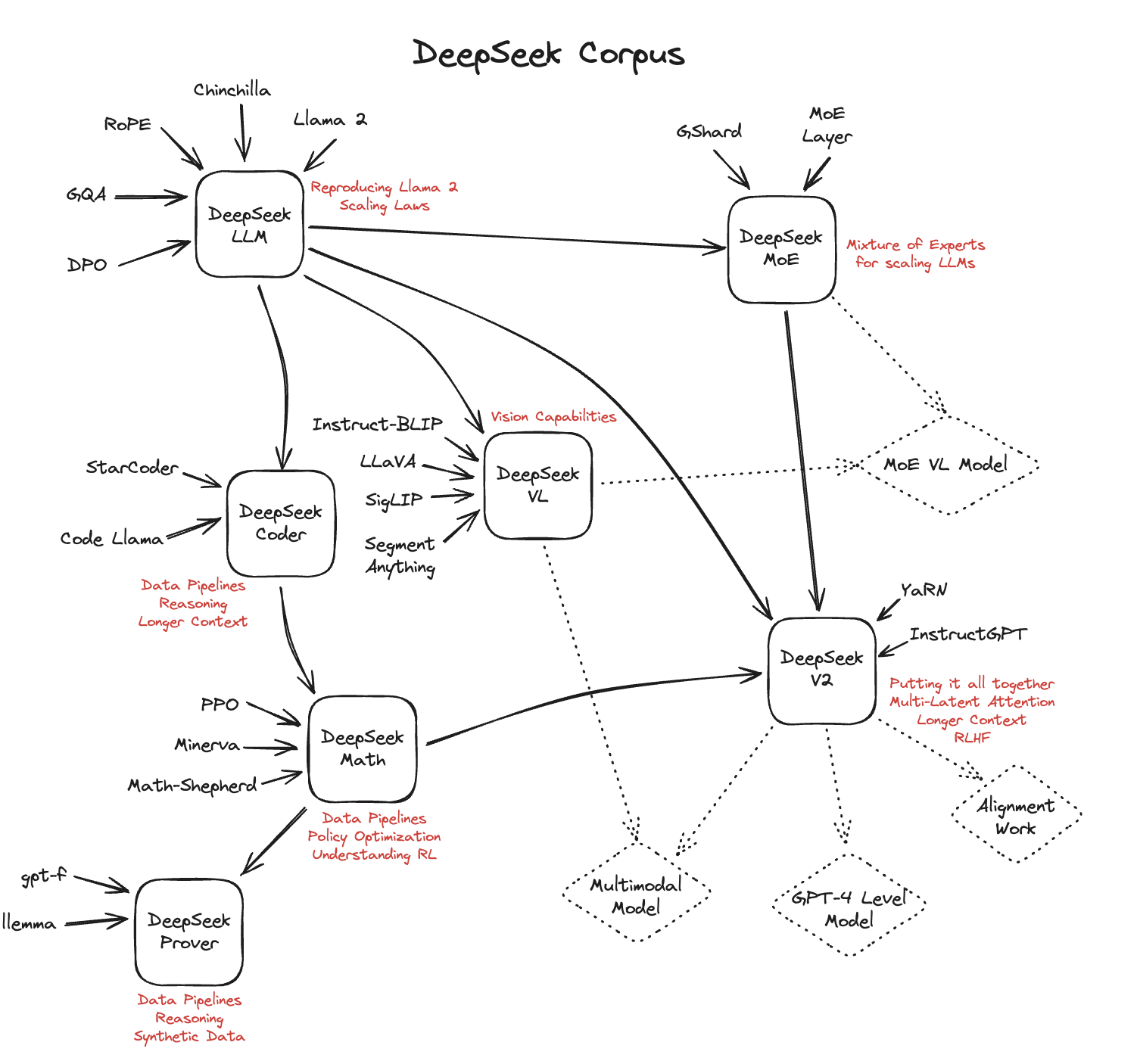DeepSeek-R1 the current AI model from Chinese startup DeepSeek represents a revolutionary advancement in generative AI innovation. Released in January 2025, it has gained international attention for its innovative architecture, cost-effectiveness, and remarkable performance across multiple domains.
What Makes DeepSeek-R1 Unique?
The increasing demand for AI designs efficient in managing complex thinking jobs, long-context comprehension, and domain-specific versatility has exposed constraints in traditional thick transformer-based designs. These designs frequently experience:
High computational expenses due to activating all parameters throughout inference.
Inefficiencies in multi-domain job handling.
Limited scalability for large-scale implementations.
At its core, DeepSeek-R1 differentiates itself through a powerful mix of scalability, efficiency, and high performance. Its architecture is built on 2 fundamental pillars: a cutting-edge Mixture of Experts (MoE) framework and a sophisticated transformer-based design. This hybrid technique permits the design to tackle intricate jobs with remarkable precision and speed while maintaining cost-effectiveness and attaining modern results.

Core Architecture of DeepSeek-R1
1. Multi-Head Latent Attention (MLA)
MLA is a critical architectural innovation in DeepSeek-R1, introduced initially in DeepSeek-V2 and further improved in R1 designed to enhance the attention mechanism, utahsyardsale.com reducing memory overhead and computational inadequacies throughout reasoning. It operates as part of the design's core architecture, straight affecting how the design procedures and creates outputs.

Traditional multi-head attention computes separate Key (K), Query (Q), and Value (V) matrices for each head, which scales quadratically with input size.
MLA replaces this with a low-rank factorization technique. Instead of caching full K and V matrices for each head, MLA compresses them into a latent vector.
During reasoning, these hidden vectors are decompressed on-the-fly to recreate K and V matrices for each head which considerably reduced KV-cache size to just 5-13% of standard techniques.
Additionally, MLA incorporated Rotary Position Embeddings (RoPE) into its design by committing a part of each Q and K head specifically for asteroidsathome.net positional details preventing redundant knowing across heads while maintaining compatibility with position-aware jobs like long-context reasoning.
2. Mixture of Experts (MoE): The Backbone of Efficiency

MoE framework permits the design to dynamically activate only the most appropriate sub-networks (or "professionals") for an offered job, making sure efficient resource utilization. The architecture consists of 671 billion specifications dispersed throughout these specialist networks.
Integrated vibrant gating system that acts on which professionals are activated based upon the input. For any given question, just 37 billion criteria are activated throughout a single forward pass, significantly reducing computational overhead while maintaining high performance.
This sparsity is attained through strategies like Load Balancing Loss, which makes sure that all professionals are made use of uniformly over time to prevent bottlenecks.
This architecture is developed upon the structure of DeepSeek-V3 (a pre-trained structure design with robust general-purpose abilities) further improved to improve thinking capabilities and domain flexibility.
3. Transformer-Based Design

In addition to MoE, DeepSeek-R1 integrates sophisticated transformer layers for natural language processing. These layers incorporates optimizations like sporadic attention systems and efficient tokenization to capture contextual relationships in text, macphersonwiki.mywikis.wiki making it possible for superior comprehension and response generation.
Combining hybrid attention mechanism to dynamically changes attention weight distributions to enhance performance for both short-context and long-context situations.
Global Attention captures relationships across the whole input series, perfect for tasks requiring long-context comprehension.
Local Attention focuses on smaller, contextually considerable segments, such as adjacent words in a sentence, improving performance for language tasks.
To streamline input processing advanced tokenized strategies are integrated:
Soft Token Merging: merges redundant tokens during processing while maintaining important details. This minimizes the number of tokens travelled through transformer layers, enhancing computational effectiveness
Dynamic Token Inflation: counter potential details loss from token merging, the design utilizes a token inflation module that brings back essential details at later processing stages.
Multi-Head Latent Attention and Advanced Transformer-Based Design are carefully related, as both offer with attention mechanisms and transformer architecture. However, disgaeawiki.info they focus on different aspects of the architecture.
MLA specifically targets the computational effectiveness of the attention system by compressing Key-Query-Value (KQV) matrices into hidden spaces, decreasing memory overhead and inference latency.
and Advanced Transformer-Based Design concentrates on the general optimization of transformer layers.
Training Methodology of DeepSeek-R1 Model
1. Initial Fine-Tuning (Cold Start Phase)

The process starts with fine-tuning the base design (DeepSeek-V3) using a little dataset of carefully curated chain-of-thought (CoT) reasoning examples. These examples are thoroughly curated to guarantee variety, clarity, engel-und-waisen.de and sensible consistency.
By the end of this phase, the model demonstrates enhanced reasoning abilities, setting the stage for advanced training stages.

2. Reinforcement Learning (RL) Phases
After the preliminary fine-tuning, DeepSeek-R1 undergoes multiple Reinforcement Learning (RL) phases to further refine its thinking capabilities and guarantee alignment with human choices.
Stage 1: Reward Optimization: Outputs are incentivized based on precision, readability, and formatting by a benefit design.
Stage 2: Self-Evolution: Enable the model to autonomously develop innovative reasoning behaviors like self-verification (where it inspects its own outputs for consistency and correctness), reflection (identifying and fixing errors in its reasoning process) and error correction (to fine-tune its outputs iteratively ).
Stage 3: Helpfulness and Harmlessness Alignment: Ensure the model's outputs are useful, harmless, and aligned with human preferences.
3. Rejection Sampling and Supervised Fine-Tuning (SFT)
After generating a great deal of samples only top quality outputs those that are both precise and understandable are picked through rejection sampling and reward model. The design is then additional trained on this fine-tuned dataset utilizing monitored fine-tuning, which includes a wider variety of concerns beyond reasoning-based ones, enhancing its proficiency throughout multiple domains.
Cost-Efficiency: A Game-Changer
DeepSeek-R1's training expense was around $5.6 million-significantly lower than competing models trained on expensive Nvidia H100 GPUs. Key elements contributing to its cost-efficiency include:
MoE architecture lowering computational requirements.
Use of 2,000 H800 GPUs for training instead of higher-cost alternatives.
DeepSeek-R1 is a testimony to the power of development in AI architecture. By integrating the Mixture of Experts framework with reinforcement knowing techniques, it delivers state-of-the-art results at a portion of the expense of its rivals.








